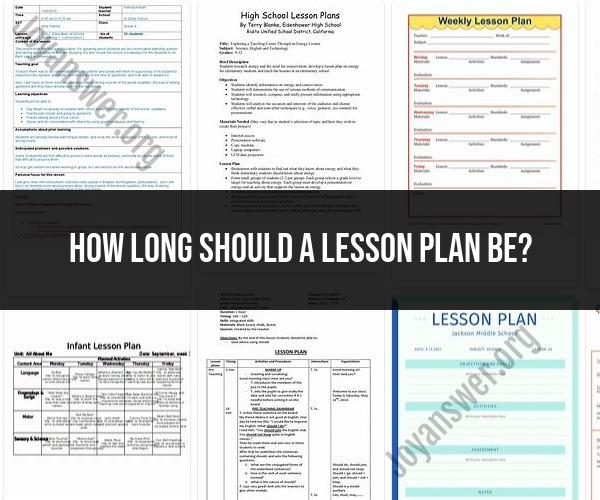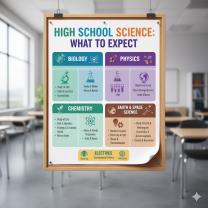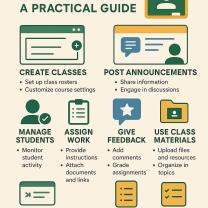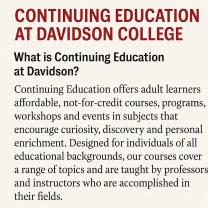How long should a lesson plan be?
Crafting an effective lesson plan is essential for delivering organized and engaging instruction to students. While the ideal length and components of a lesson plan can vary based on factors such as grade level, subject, and teaching style, here's a general guideline for creating a comprehensive lesson plan:
Ideal Length:The ideal length of a lesson plan can vary, but a standard lesson plan should typically cover one class period, which is usually around 45 to 60 minutes. For more complex topics or activities, you might need to extend the plan over multiple class periods.
Components of an Effective Lesson Plan:
1. Lesson Title and Overview:Provide a concise title that reflects the main focus of the lesson. Include a brief overview that outlines the purpose and goals of the lesson.
2. Learning Objectives:Clearly state the learning objectives or outcomes you intend to achieve during the lesson. These objectives should be specific, measurable, achievable, relevant, and time-bound (SMART).
3. Prerequisite Knowledge:Outline any prior knowledge or skills that students should have before starting the lesson. This helps you gauge students' readiness and adjust your teaching accordingly.
4. Materials and Resources:List all the materials, resources, and technology tools you'll need for the lesson. This ensures you're well-prepared and helps you avoid interruptions during instruction.
5. Introduction/Hook:Engage students from the start with an attention-grabbing introduction that connects the lesson's content to their interests or experiences. This can be a question, story, video, or any activity that piques their curiosity.
6. Instructional Activities:Break down the lesson into a series of activities or steps that guide students through the learning process. Include a mix of teacher-led and student-centered activities to keep the lesson engaging.
7. Direct Instruction:Provide clear explanations and demonstrations of key concepts or skills. Use visuals, examples, and analogies to help students understand the content.
8. Guided Practice:Engage students in practicing what they've learned with your guidance. This can include group discussions, worksheets, problem-solving tasks, and interactive activities.
9. Independent Practice:Give students opportunities to apply what they've learned independently. Assign exercises, homework, or projects that reinforce the lesson's objectives.
10. Assessment/Evaluation:Outline how you'll assess students' understanding and mastery of the learning objectives. This can include quizzes, discussions, presentations, or other assessment methods.
11. Closure and Review:Summarize the main points of the lesson and connect them back to the learning objectives. Allow time for students to ask questions and reflect on what they've learned.
12. Differentiation and Modifications:If applicable, note how you'll differentiate instruction for diverse learners, including those with special needs or English language learners.
13. Extension Activities:Provide optional extension activities for students who finish early or want to explore the topic further. These activities can challenge advanced learners or provide additional practice.
14. Reflection:Include a section for your own reflection on how the lesson went, what worked well, and areas for improvement. This reflection will inform your future lesson planning.
Remember that flexibility is key. Be prepared to adjust your lesson plan based on students' responses and needs during the lesson. As you gain experience, you'll develop a sense of how to structure lessons effectively and efficiently.













